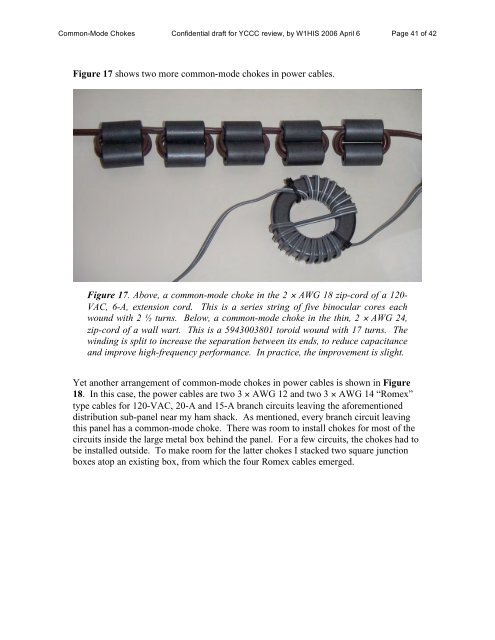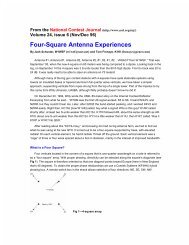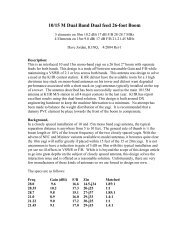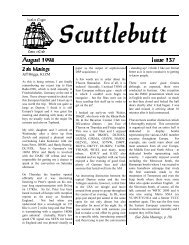Common Mode Chokes by W1HIS - Yankee Clipper Contest Club
Common Mode Chokes by W1HIS - Yankee Clipper Contest Club
Common Mode Chokes by W1HIS - Yankee Clipper Contest Club
Create successful ePaper yourself
Turn your PDF publications into a flip-book with our unique Google optimized e-Paper software.
<strong>Common</strong>-<strong>Mode</strong> <strong>Chokes</strong> Confidential draft for YCCC review, <strong>by</strong> <strong>W1HIS</strong> 2006 April 6 Page 41 of 42Figure 17 shows two more common-mode chokes in power cables.Figure 17. Above, a common-mode choke in the 2 × AWG 18 zip-cord of a 120-VAC, 6-A, extension cord. This is a series string of five binocular cores eachwound with 2 ½ turns. Below, a common-mode choke in the thin, 2 × AWG 24,zip-cord of a wall wart. This is a 5943003801 toroid wound with 17 turns. Thewinding is split to increase the separation between its ends, to reduce capacitanceand improve high-frequency performance. In practice, the improvement is slight.Yet another arrangement of common-mode chokes in power cables is shown in Figure18. In this case, the power cables are two 3 × AWG 12 and two 3 × AWG 14 “Romex”type cables for 120-VAC, 20-A and 15-A branch circuits leaving the aforementioneddistribution sub-panel near my ham shack. As mentioned, every branch circuit leavingthis panel has a common-mode choke. There was room to install chokes for most of thecircuits inside the large metal box behind the panel. For a few circuits, the chokes had tobe installed outside. To make room for the latter chokes I stacked two square junctionboxes atop an existing box, from which the four Romex cables emerged.












